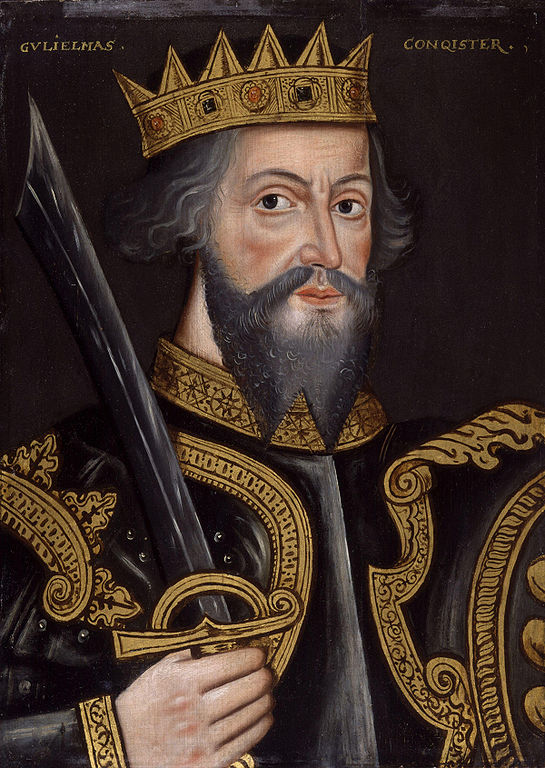William the Conqueror
William the Conqueror or William I is best known for pushing England into the phase known as Medieval England; William claimed the Battle of Hastings victory; brought in the introduction of modern castle building techniques and by the time he died in 1087 had financially tied down many people with the Domesday Book.
His parents were Robert, Duke of Normandy and Herleva of Falaise. They never married and for this reason William’s enemies labelled him as "William the Bastard" - though this was never actually said to him when he had grown up.
William’s father died in 1035 and as his only surviving heir, William became Duke of Normandy at age eight. The fact that William was so young and he was born outside of marriage meant that many lords in Normandy did not approve of being ruled by him. So in 1040, they tried to kill the young Duke. This did not fall through but William's guardian (Gilbert of Brionne) was killed.

In 1047, the lords in western Normandy opposed William another time. They failed again but because of these two situations William learnt not to trust anyone. He also became a victim of the violent time he lived in. He believed that if someone betrayed him or a village or town betrayed him, then he should show no mercy. In 1051, citizens in the town of Alençon, which William was besieging, taunted him about being illegitimate. Once the town had fallen to him, he commanded that his abusers should have their hands and feet cut off.
In 1051, William met Edward the Confessor. William claimed that at this meeting, Edward promised him the throne of England on Edward's death. However, there were no definite witnesses, just people who wanted to keep on William’s good side.
In 1053, William married Matilda of Flanders. They had nine children altogether and seven survived.
During the next 10 years, William had to keep fighting invaders off his territory. He always succeeded and managed to build up a fearsome and professional army whose main power was based on cavalry - horse borne soldiers who were highly trained.
Upon his defeat of Harold at the Battle of Hastings, William used the Feudal System to have control over England. This control was continued a great deal by the Domesday Book.
William died in September 1087 from significant internal injuries when his horse was scared by embers in a burning Norman village, causing it to rear and drive the pommel on the saddle into William's stomach. He took several days to die and when he did, he was buried but was too big for his coffin and his body had to be stuffed into it. According to legend, the body rotted so much before the burial that it split open.
The entire contents of his coffin was stolen in 1562 - apart from a thigh bone. This was in fact removed during the French Revolution, which means no-one knows the location of William’s skeleton.
See also:
MLA Citation/Reference
"William the Conqueror". HistoryLearning.com. 2025. Web.
Key facts
| Name: | William the Conqueror |
| Birth Date: | 1996 March 19, Falaise, Normandy |
| Death: | 9 September 1087, Rouen, Normandy |
| Coronation: | 25 December 1066 |
| Reign: | 3 July 1035 - 9 September 1087 |
| Predecessor: | Harold II |
| Successor: | William II |
Key facts
| Name: | William the Conqueror |
| Birth Date: | Approx. 1028, Falaise, Normandy |
| Death: | 9 September 1087, Rouen, Normandy |
| Coronation: | 25 December 1066 |
| Reign: | 3 July 1035 - 9 September 1087 |
| Predecessor: | Harold II |
| Successor: | William II |
